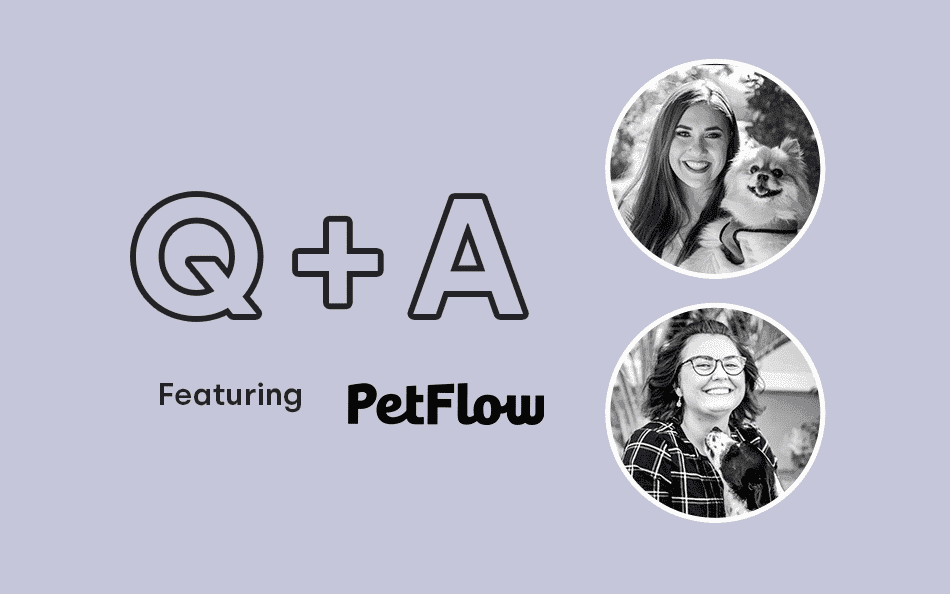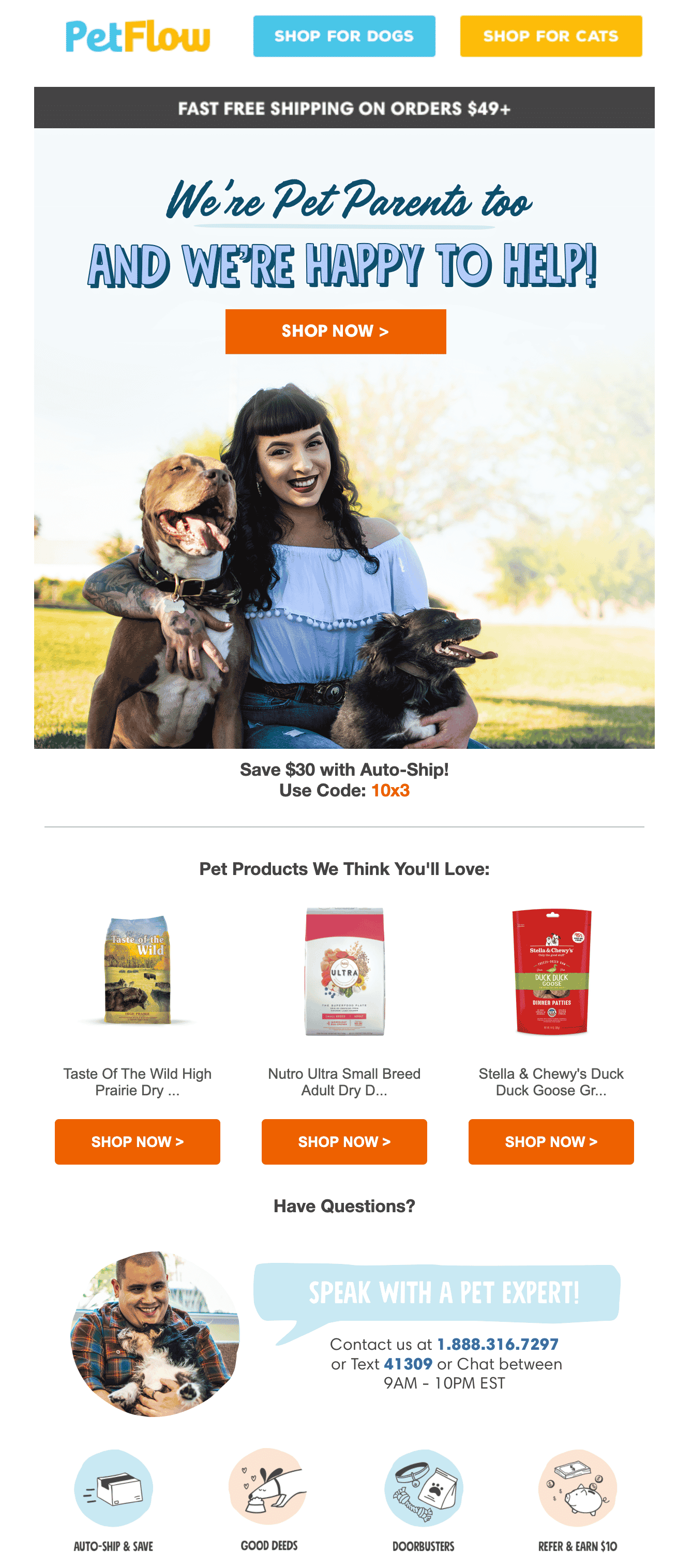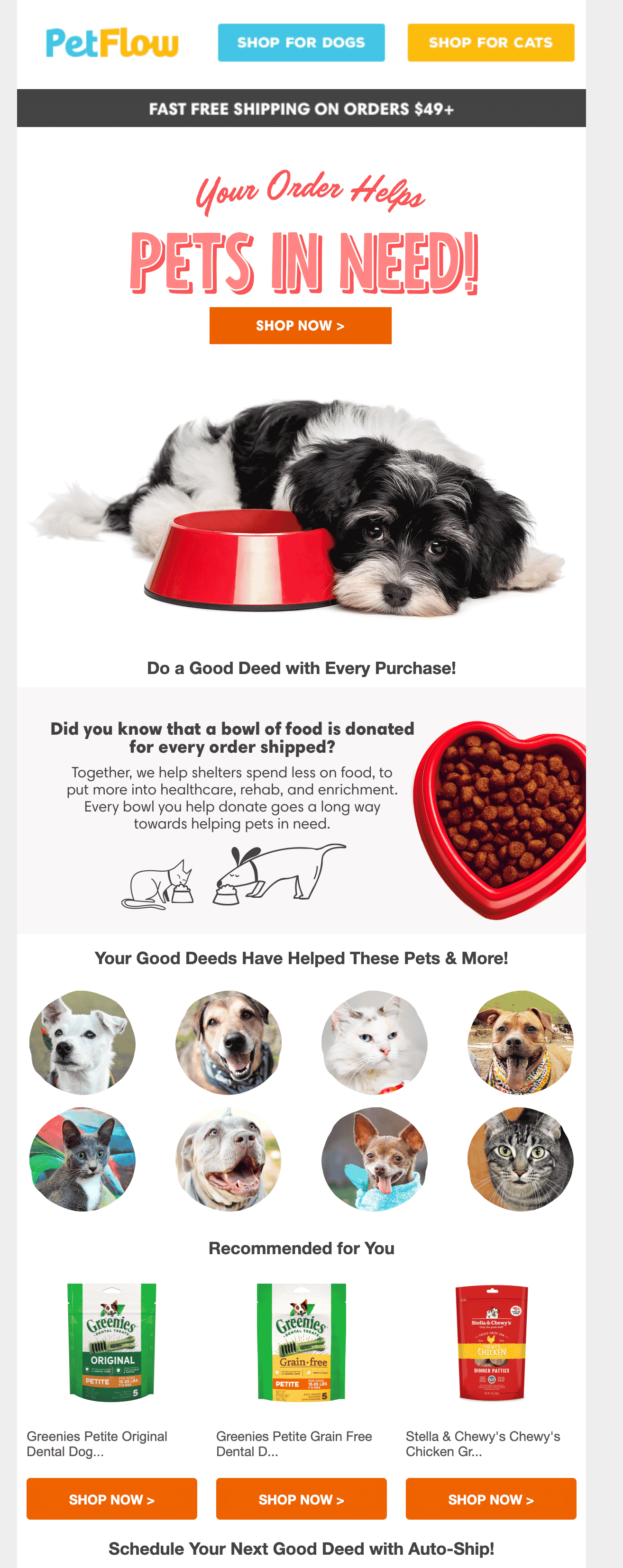Product & Customers
Real Results From a Warm Welcome: Q&A with PetFlow’s Tess Mellinger and Rachel Endicott
November 16, 2020

This Q&A with Tess Mellinger and Rachel Endicott from PetFlow is part of a series highlighting the amazing people behind the retail and media brands that work with Marigold Engage by Sailthru. Click here to read our Q&As with Conde Nast’s Sabrina Daryanani, Raise’s Kelly Hickey, RevZilla’s Andrew Lim, and Thrive Market’s Lindsay McGovern.
Food, toys, bowls, crates and gates: New pet owners have fairly extensive shopping lists, including many first-time purchases. Fortunately, the team at PetFlow, all pet parents themselves, understands how overwhelming the discovery phase can be and eases new shoppers in with an outstanding onboarding experience.
PetFlow customers didn’t always get as a warm of a welcome as they do now. The team recently revamped its welcome series, creating different journeys for different audiences such as first-time buyers or those customers who use auto-ship subscription services, for example. So far, the tailored segment strategy is working well. For the first-time buyers welcome series specifically, PetFlow has seen a 48% increase in open rate, a 75% increase in auto-ship creation and a 175% increase in revenue per send.
We recently spoke with Tess Mellinger, Ecommerce Product Manager at PetFlow, and Rachel Endicott, PetFlow’s CRM strategist, about that welcome series, as well as how it works with the retailer’s onsite experience, PetFlow’s priorities in the future, and more.
How did you manage cross-channel marketing before migrating onto Sailthru two years ago?
Tess Mellinger: When we were looking at ESPs, the personalization in Marigold Engage by Sailthru was a big draw. From a technical perspective, it was a lot easier to set up our customer data because it was much more centralized. We didn’t have to pre-map out every single customer column we needed on a user profile; we could just add them as needed and only see that data when it’s populated.
In the past, we struggled with, ‘How many emails do we send to this user? Did we email this user?’ But now with Marigold Engage by Sailthru, we have much more clarity because it’s so easy to look up one user and see what their experience has been. I also think products like Lifecycle Optimizer make it easy to build our existing automated campaigns and add more advanced campaigns. The first time we sent out a personalized template, the results were crazy.
Can you tell us more about the new welcome series? How important is onboarding in terms of building relationships with PetFlow customers?
Rachel Endicott: The welcome series is the first email touchpoint for so many customers and we had branding from a year ago that just didn’t line up with what we were doing. The offers didn’t line up with the onsite customer experience. Now we have different welcome series depending on whether or not someone is an auto-ship customer. There are emails dedicated to the ease of auto-ship and how to change your auto-ship, kind of an educational welcome series. And then we have one for one-time customers to get them to auto-ship. If you do sign up for auto-ship, you enter another welcome series because auto-ship is new to you, so we’ll tell you about those features. The verbiage is different depending on the recipient, but we always want to clearly communicate who PetFlow is and what our values are, which is why we speak to our good deeds program.

And then the final email of our welcome series is an email introducing you to the customer service team. The message is, ‘We’re here to help you.’ I think the biggest thing is, we want to make sure customers are aware that we’re pet parents, and we want to help you and make sure you have access to the best nutrition for your pets.
How do your onsite and email personalization work together?
TM: If you’re a brand new customer, we probably don’t have a lot of personalization for you. We have a couple of fields that show popular and trending items, which may change over time, but those are more about what’s trending onsite than what you specifically would be interested in.
One thing we did in the welcome series is work to get more interest data in user profiles. We have a lot of static category or brand links and if you click on any of them, the URL parameter adds interest data to your user profile. If you clicked on “shop dog” or “shop cat,” that’s really important to determine what kind of products would be relevant to you.
People have different behaviors shopping for pets than they do shopping for themselves. How does that factor into product recommendations? Which algorithms work best for PetFlow?
RE: We have what we call our ‘Sunday campaign’ that goes out to our largest audience every week. It’s for customers who just want one email a week, along with our main audience. We have a template with previous purchase personalization because we want to make sure that’s always front of mind. It’s kind of like, ‘Hey, remember you shopped with us?’
TM: That email has been really successful. We have set up some custom Zephyr to show you consumable items you’ve purchased in the past. We look at users’ past purchases and the tags on those items, and we filter them to only consumable item categories. That way, instead of recommending a dog bed again, we’ve filtered it to show food or treats or cat litter, things you do need to buy regularly.
Can you talk more about the Good Deeds program? Do you find that those customers tend to be more engaged?
TM: We partner with a different brand each month — it’s Natural Balance this month — and for every order we ship, a bowl of food is donated to a pet in need. We feature pictures of the pets we help on social media and in our campaign emails. In our order confirmations, we also have a slice at the top that’s randomized to show different pets like, ‘You just helped feed Tucker!’

Sometimes it lines up just right for someone. If a customer who has and loves German Shepherds sees a cute German Shepherd on there, they’ll take a screenshot and share it on Instagram. It’s a great way to connect with customers. A lot of people would rather pay a little more, as opposed to going to Walmart, because they know they’re helping a dog or cat in need.
What’s next for PetFlow?
RE: For marketing, acquisition will definitely be our main focus. We want to do a lot more A/B testing with Overlays. It helps to think about what the experience was in the past because as we build these tests out, we’re able to address things like how some brands don’t allow certain types of discounts. For example, if you were entering the site on one of those product pages, you’d get an offer you couldn’t use on the product. We were able to set up a separate experience so that you only get offers you can use. We’re thinking those are experiences that maybe need a little more nuance than what we had.
The State of Brand Loyalty in the U.S. in 2023
Related



